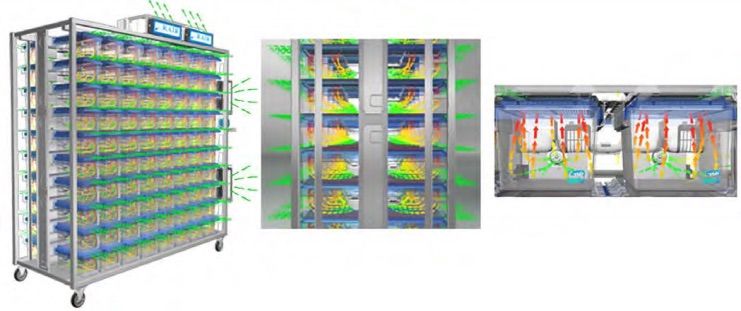Animal biosafety levels, similar to biosafety levels, provide increasing protection to personnel and the environment. These levels are the general minimum requirement for work with exposed laboratory animals.
![]() Important Information
Important Information
ABSL Examples
- ABSL1/1+: AAV
- ABSL2: Hepatitis C, Salmonella
- ABSL3: Yellow Fever virus, MTb
- ABSL4: Ebola

ABSL1 and ABSL1+
ABSL1 is appropriate for work with animals involving well-characterized agents that are not known to cause disease in immunocompetent adult humans and which present a minimum hazard to personnel and the environment. At Stanford, an additional ABSL1 designation exists: ABSL1+ is used to indicate animals that have been administered certain viral vectors or rDNA but are not considered biohazardous. For some viral vector work, animals must be housed at ABSL2 for a minimum shedding period and undergo a cage change performed by the responsible research staff prior to moving to ABSL1+. For other viral vector work, animals can be housed at ABSL1+ immediately following inoculation or administration of rDNA. See the Animal Housing section below for specifics on viral vectors and housing. Upon approval by the APB and VSC, ABSL1+ animals can be housed in standard ABSL1 animal housing facilities, but cages must remain marked with special cards as designated by the VSC. VSC staff can perform husbandry of these animals after the first cage change.
ABSL2
ABSL2 is suitable for work involving laboratory animals infected with agents associated with human disease and which pose moderate hazards to personnel and the environment. ABSL2 also includes work involving some viral vectors and rDNA use, as well as the maintenance of laboratory animals that may naturally harbor zoonotic infectious agents. It builds upon the practices, procedures, containment equipment and facility requirements of ABSL1. Work at ABSL2 requires a protocol that has been approved by both the APB and APLAC prior to the initiation of any work.
ABSL3
ABSL3 is appropriate for work with laboratory animals infected with indigenous or exotic agents, agents that present a potential for aerosol transmission, and agents causing serious or potentially lethal disease. ABSL3 requirements build upon the foundation of lower-level practices, procedures, containment equipment and facility requirements of ABSL2. Work at ABSL3 requires a protocol that has been approved by both the APB and APLAC prior to the initiation of any work. Additional procedural and housing ABSL3 facilities are being added to the VSC, with projected facility opening set for 2024.
ABSL4
ABSL4 is required for work with animals infected with dangerous and exotic agents that pose a high individual risk of aerosol-transmitted laboratory infections and life-threatening disease that is frequently fatal and for which there are no vaccines or treatments, or a related agent with unknown risk of transmission. Currently, ABSL4 work is not allowed at Stanford University.
